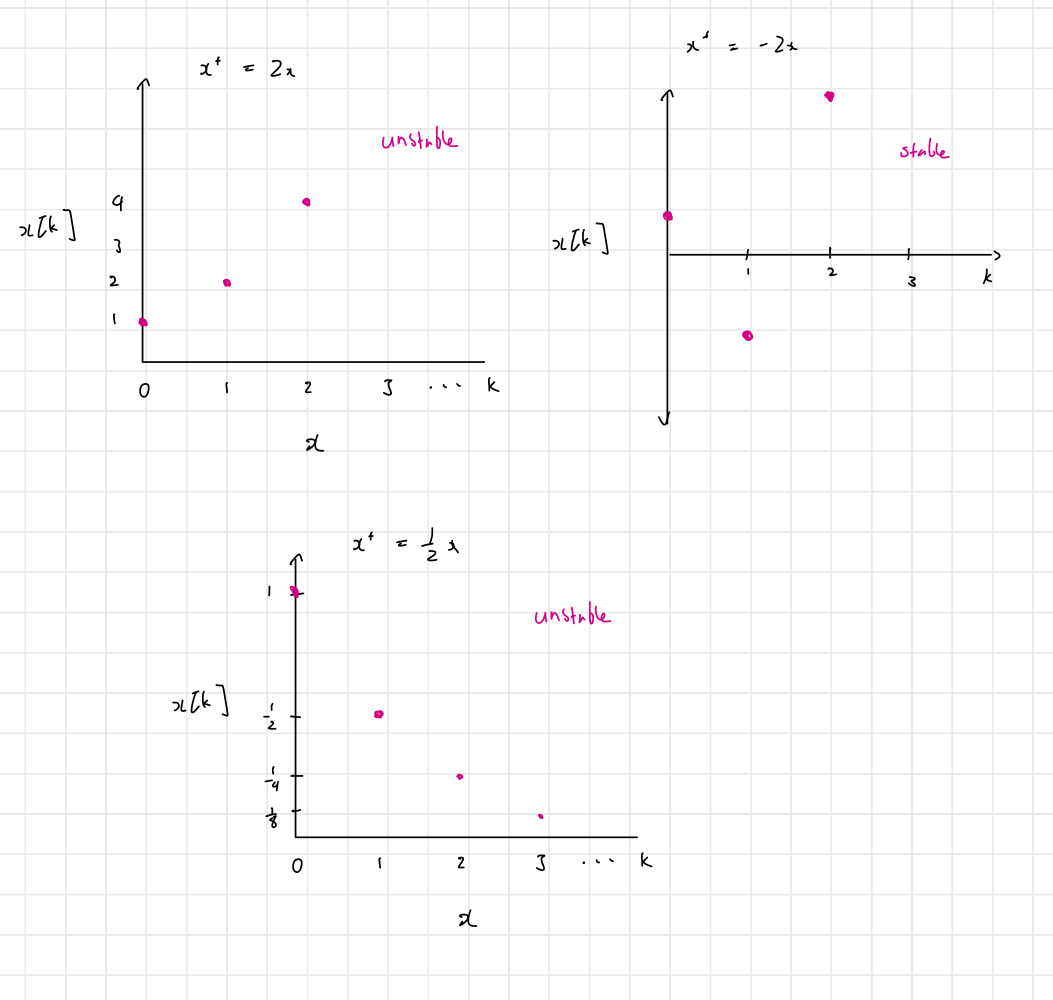An example discrete system:
We can look at the behavior for various :

This behaves quite differently from a continuous-time system, motivating a different definition.
Looking at our system again:
- Case 1: – stable
- Case 2: – unstable
- Case 3: – unstable
Thus, the region of stability for the discrete case is the open unit disk ():

Another example:
Taking the z-transform to move into the frequency domain:
- The time shift becomes a
Solving for gives:
Thus, is a pole of this system.
Stability criterion for discrete-time systems
A real, rational, transfer function for a discrete-time is stable if all all poles of lie in .
Quick Examples
- is stable ( is inside open unit disk)
- is unstable
- is stable
- is unstable (lies on border of open unit disk)